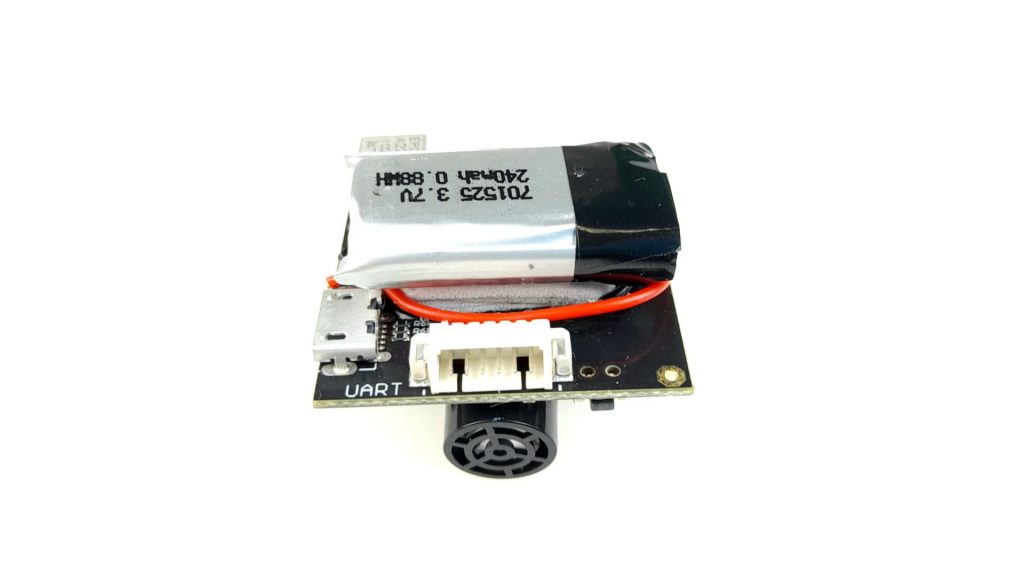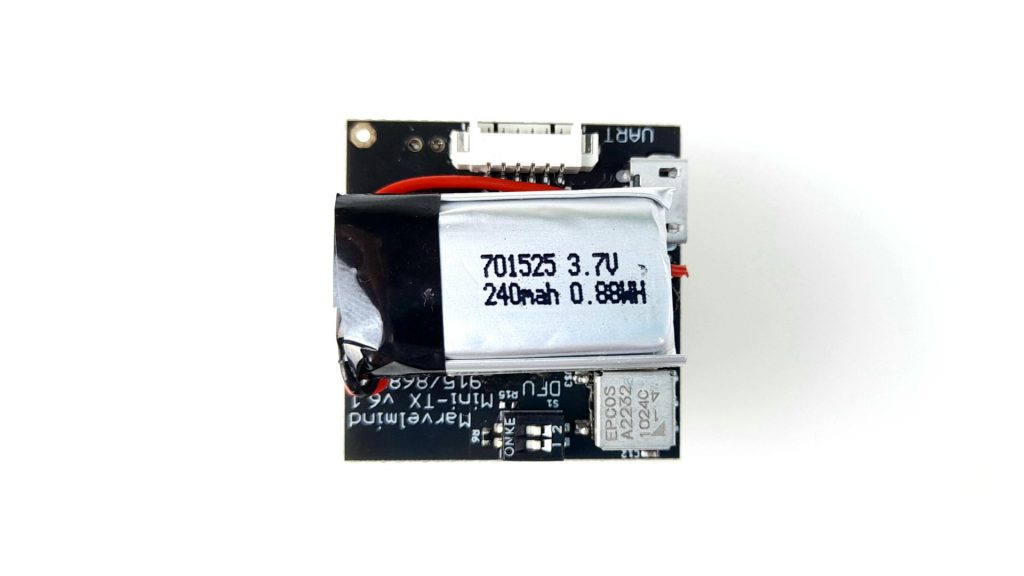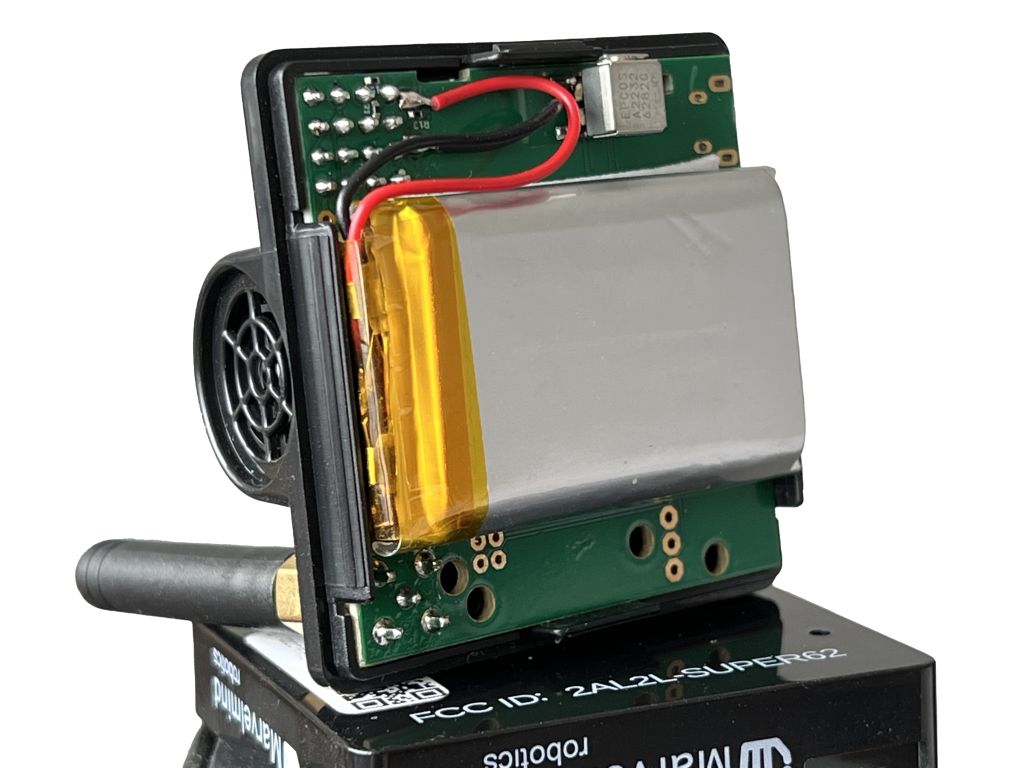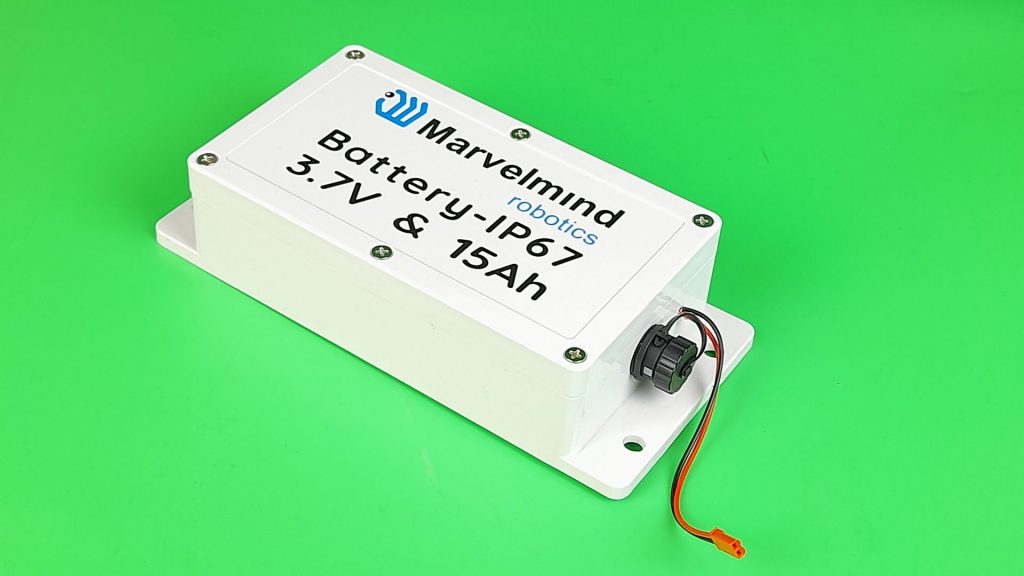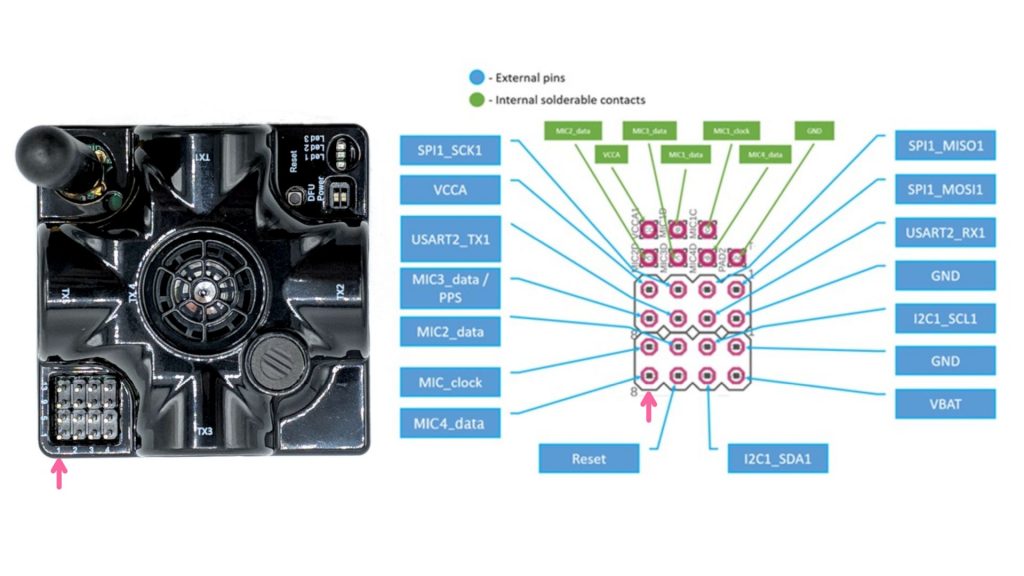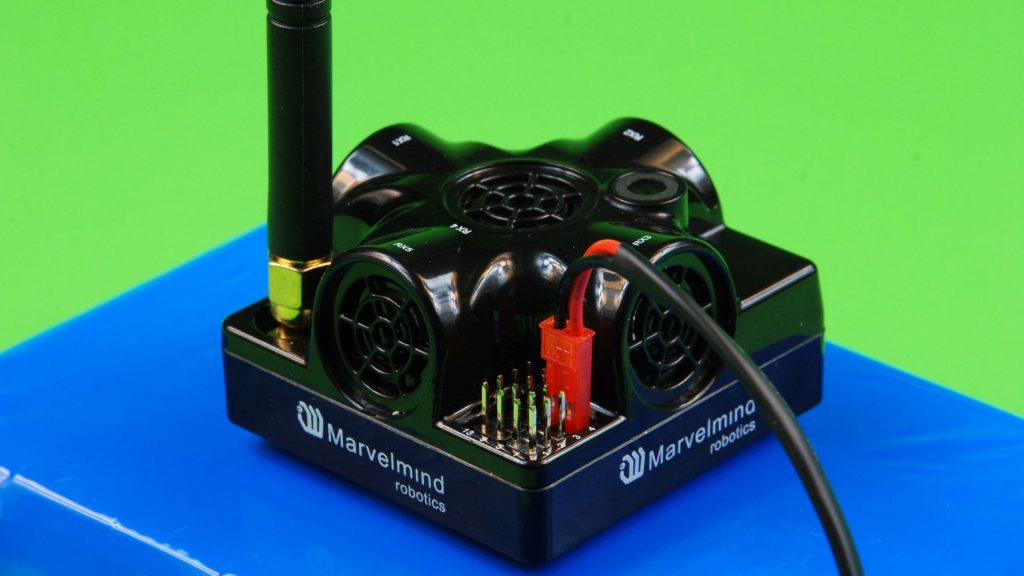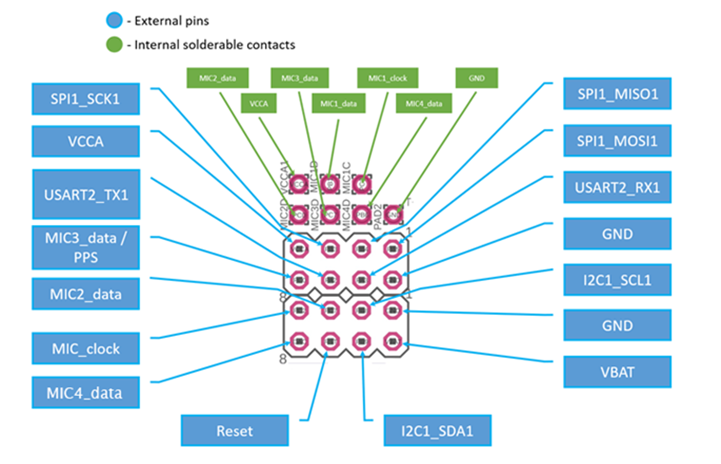Home » Powering beacons from external power supply
Powering beacons with external power supply
Hints on how to remove battery to make beacons lighter and power them externally
Task and request
“We’re using the Mini Tx and I can’t seem to find a definition of the input voltage range. Some pages seem to suggest it’s 3v6, others suggest it’s 3v6 to 5v. Please can you clarify this for me.”
Warnings and disclaimers
Yes, it is possible to remove a battery and power externally. But you must be reasonably proficient in electronics and know what you do. Otherwise, the battery may catch a fire or the boards are killed in action.
Removing batteries
Majority of our beacons have internal LiPol batteries that can be removed to save weight or reduce volume when it is required. For example, see a Mini-TX beacon with the external shall removed.
It is easy open the Super-Beacon even without special tools: https://www.tiktok.com/@marvelmind_robotics/video/7085415177054637317
As you can see, battery occupies a large part of the beacon’s volume and can be 50% of the weight or more.
If you have batteries or power supply onboard anyway, it can be tempting and reasonable to remove the battery and supply the beacon externally. It is possible.
Recommendations
Basics:
- Cut the wires or unsolder only when the device is not powered. Which is impossible for the very first wire, of course. Thus, be particularly careful
- Make sure you are not short-circuiting the battery
- Typically, the batteries are attached with a double-side tape. Peel off slowly
- Don’t kill the devices with static from your body or voltage leakage from poorly grounded soldering iron and other external devices
Voltages and currents:
- When the battery is unsoldered, to exactly the same pins you can provide +3.6-5.5V
- Less than +3.6V may not give enough margin to stabilize the voltage on 3.3V and can reduce the ultrasound pulses power
- More than 5.5V very likely kill the internal voltage stabilizers
- If your beacon is purely receiving ultrasound, for example, Mini-RX or Super-Beacon that is not expected to transmit ultrasound, 100 mA of peak current from the power supply is enough
- If the beacon must transmit ultrasound, your power source must provide, at least, 1A of peak current
External battery in parallel with internal one?
Yes, it is possible to do but it is not a very good practice and requires carefulness and understanding.
Connecting batteries in parallel, normally, would require BMS to balance the voltages. However, in practice, it is often possible to balance the voltages first, then, to connect the batteries, and then the batteries act as a whole and somewhat self-balance due to internal resistance.
Again, it is not the best practice, but, yes, when voltages initially are similar, it is possible to connect an external battery, if needed, for example, to drastically increase the autonomy of the beacon
Super-Beacons are easy to power externally
Super-Beacons are very easy to power externally via the 4×4 pins. Check the pinout in the Operating Manual.
Those two pins are directly connected to the internal battery and, normally, shall be used to power external devices, for example, Omni-Microphones or your own devices. But in the light of this topic, they can be used to connect an external 3.6V LiPol battery in parallel with the internal one and extend the battery life time of the beacon from days to weeks and years depending on the settings and the size of the battery.
Important questions and answers
After a few emails and chats with customers, it became apparent that explanations are now clear enough. Shallow understanding may damage the beacon and even cause a fire.
Read more the Operating Manual where everything is described in more details. Extracts and shortcuts.
The 4×4 pin-out of the Super-Beacon:
Question: can we power the beacon externally via the VCCA pin?
Answer: No, you must not do that. VCCA is an outpin of clean 3.3V to power external devices, for example, External Microphones.
Question: can we power the beacon externally by soldering to the VBAT pin?
Answer: Yes, you can, as described above – with precaution and understanding what you are doing. Recommended:
- Carefully disconnect the internal battery and supply 3.5-5.5V & 1A source or
- You can connect an external large battery in parallel with the internal one, but their voltages must be balanced first, for example, both are fully charged
- You can do even a more serious hacking by soldering directly to internal pins
